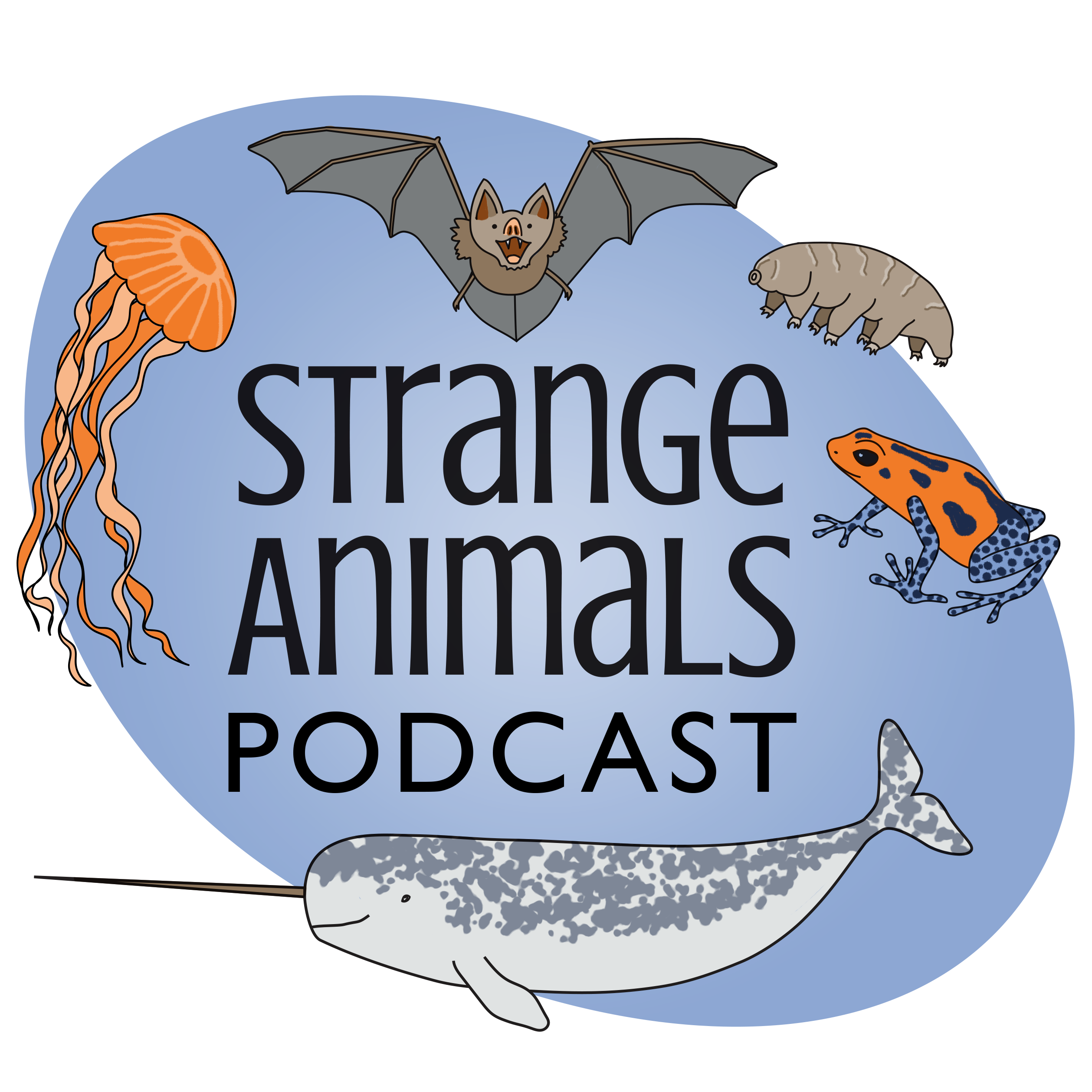Episode 219: The Strange and Mysterious Tarsier

Thanks to Phoebe for suggesting the tarsier, this week's strange and interesting primate!\n\nFurther Reading:\n\nDecoding of tarsier genome reveals ties to humans\n\nLong-lost 'Furby-like' Primate Discovered in Indonesia\n\nTarsiers look like weird alien babies:\n\n\n\nA tarsier nomming on a lizard:\n\n\n\nA tarsier nomming on an insect:\n\n\n\nThe pygmy tarsier and someone's thumb:\n\n\n\nThere's probably not much going on in that little brain:\n\n\n\nShow Transcript:\n\nWelcome to Strange Animals Podcast. I\u2019m your host, Kate Shaw.\n\nThis week we\u2019re looking at a weird and amazing little primate, but it\u2019s not a monkey or ape. It\u2019s the tarsier, with thanks to Phoebe who suggested it. It\u2019s pronounced tarsiAY or tarsiER and both are correct.\n\nThe tarsier is such a little mess that until relatively recently scientists weren\u2019t even completely certain it was a primate. A 2016 genetic study determined for sure that it is indeed a primate even though it differs in many ways from all other primates alive. For instance, it\u2019s a carnivore. Most primates are herbivores and some are omnivores, including humans and chimpanzees, but only the tarsier is an obligate carnivore. That means it has to eat meat and only meat, whether it\u2019s invertebrates, birds, reptiles, or small mammals like rodents.\n\nScientists divide primates into two groups informally, into wet-noses and dry-noses. Wet-nose doesn\u2019t refer to a nose that\u2019s runny but to a nose that stays moist, like a dog\u2019s nose. This splits along the same lines as simians and prosimians, another way to group primates. Humans and other apes, along with monkeys, are simians, and also dry-noses. If you\u2019re not sure if that\u2019s accurate, just touch the end of your nose. Make sure you\u2019re not standing in the rain or just got out of the bathtub, though. All other primates are wet-noses, and also prosimians, except for the tarsier. The tarsier is sort of in between. It\u2019s grouped with the wet-nose primates, but it turns out to be more closely related to the dry-nose primates than the wet-noses. Also, its nose is actually dry.\n\nOne interesting difference between prosimians and simians concerns vitamin C. Vitamin C is found in a lot of foods, but especially in fruit and vegetables. If you don\u2019t have any vitamin C in your diet, you will eventually die of scurvy like an old pirate, so make sure to eat plenty of fruit and vegetables. But most animals don\u2019t need to eat foods containing vitamin C because their bodies already produce the vitamin C they need. Humans, apes, and monkeys have to worry about scurvy but prosimians don\u2019t. But the tarsier does need vitamin C even though it\u2019s a prosimian. A lot of researchers think the tarsier should be grouped with the simians, not prosimians.\n\nThe tarsier currently lives only in southeast Asia, mostly on forested islands, although tarsier fossils have been found throughout Asia, Europe, and North America. Genetic studies also indicate it probably started evolving separately from other primates around 55 million years ago in what is now China.\n\nAs it happens, we have a fossil that appears to be an early ancestor of the tarsier. Archicebus achilles was discovered in 2003 and studied for an entire decade before it was described in 2013, and it lived about 55 million years ago in what is now central China. It looks a lot like a tiny tarsier, but with smaller eyes that suggest it was active during the day. Its feet were shaped like a monkey\u2019s, though, not like a tarsier\u2019s feet. It probably only weighed about an ounce, or 28 grams. That\u2019s about the same weight as a pencil. It had sharp little teeth and probably ate insects. So far the 2003 specimen is the only one found, but it\u2019s remarkably complete so researchers have been able to learn a lot about it. If I\u2019d been one of the scientists studying it, there is no way I could have waited ten whole years to tell people about it. I\u2019d have studied it for like six months and then thought, \u201cOkay, good enough,